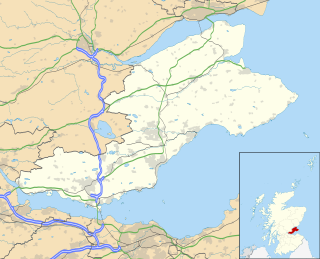
Fife is a council area, historic county, registration county and lieutenancy area of Scotland. It is situated between the Firth of Tay and the Firth of Forth, with inland boundaries with Perth and Kinross and Clackmannanshire. By custom it is widely held to have been one of the major Pictish kingdoms, known as Fib, and is still commonly known as the Kingdom of Fife within Scotland. A person from Fife is known as a Fifer. In older documents the county was very occasionally known by the anglicisation Fifeshire.

Kirkcaldy is a town and former royal burgh in Fife, on the east coast of Scotland. It is about 11.6 miles (19 km) north of Edinburgh and 27.6 miles (44 km) south-southwest of Dundee. The town had a recorded population of 49,460 in 2011, making it Fife's second-largest settlement and the 11th most populous settlement in Scotland.
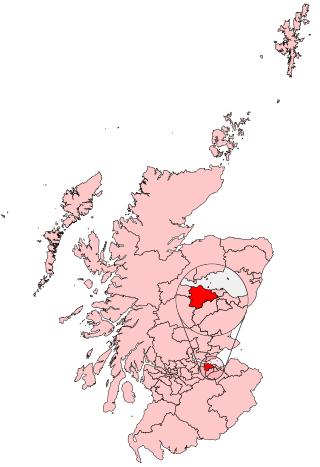
Edinburgh West is a burgh constituency of the House of Commons of the Parliament of the United Kingdom, first contested at the 1885 general election.

Glenrothes is a constituency in Scotland represented in the House of Commons of the UK Parliament since 2005.

Cowdenbeath and Kirkcaldy is a county constituency representing the areas around the towns of Kirkcaldy and Cowdenbeath, in Fife, Scotland, in the House of Commons of the Parliament of the United Kingdom.
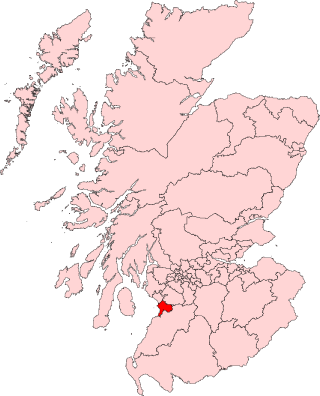
Ayr was a county constituency of the House of Commons of the Parliament of the United Kingdom from 1950 to 2005. It elected one Member of Parliament (MP) by the first-past-the-post system of election.
West Fife was a parliamentary constituency represented in the House of Commons of the Parliament of the United Kingdom from 1885 to 1974. Along with East Fife, it was formed by dividing the old Fife constituency.

Rutherglen is a burgh constituency represented in the House of Commons of the Parliament of the United Kingdom since 2024. It also existed between 1918 and 2005 and was largely replaced by Rutherglen and Hamilton West while a small portion became part of Glasgow Central and Glasgow South.

Dunfermline East was a burgh constituency represented in the House of Commons of the Parliament of the United Kingdom. It elected one Member of Parliament (MP) by the first-past-the-post voting system.
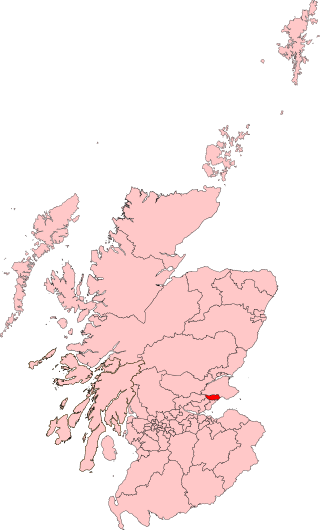
Central Fife was a parliamentary constituency represented in the House of Commons of the Parliament of the United Kingdom from February 1974 until 2005, when it was largely replaced by the new Glenrothes constituency, with a small portion joining the expanded North East Fife.
Dysart Burghs was a district of burghs constituency of the House of Commons of Great Britain from 1708 to 1801 and of the House of Commons of the United Kingdom from 1801 to 1832. It elected one Member of Parliament (MP).

Kirkcaldy is a constituency of the Scottish Parliament (Holyrood). It elects one Member of the Scottish Parliament (MSP) by the plurality method of election. Also, it is one of nine constituencies in the Mid Scotland and Fife electoral region, which elects seven additional members, in addition to nine constituency MSPs, to produce a form of proportional representation for the region as a whole.
Kirkcaldy Burghs was a burgh constituency of the House of Commons of the Parliament of the United Kingdom (Westminster) from 1832 to 1974. It elected one Member of Parliament (MP) by the first-past-the-post voting system. From 1832 to 1950 it was, officially, a district of burghs constituency.

Kirkcaldy was a local government district in the Fife region of Scotland from 1975 to 1996. The district was named after the town of Kirkcaldy but also covered a wider area, including the Fife regional capital of Glenrothes.
Kirkcaldy in Fife was a royal burgh that returned one commissioner to the Parliament of Scotland and to the Convention of Estates. It was represented in Parliament from at least 1571 until 1707.
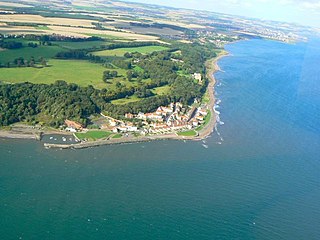
Wemyss is a civil parish on the south coast of Fife, Scotland, lying on the Firth of Forth. It is bounded on the north-east by the parish of Scoonie and the south-west by the parish of Kirkcaldy and Dysart and its length from south-west to north-east is about 6 miles. Inland it is bounded by Markinch and its greatest breadth is 2+1⁄4 miles.
Kirkcaldy and Dysart is a civil parish on the south coast of Fife, Scotland, lying on the Firth of Forth, containing the towns of Kirkcaldy and Dysart and their hinterland. The civil parish was formed in December 1901 by an amalgamation of the parishes of Kirkcaldy, Dysart and Abbotshall, along with the portion of the parish of Kinghorn which lay within the burgh of Kirkcaldy. However, the parish of Abbotshall was originally part of the parish of Kirkcaldy and had only been disjoined from it in 1650.

Elections to Fife Council took place on 5 May 2022 on the same day as the 31 other Scottish local government elections. As with other Scottish council elections, it was held using single transferable vote (STV) – a form of proportional representation – in which multiple candidates are elected in each ward and voters rank candidates in order of preference.













